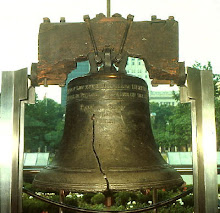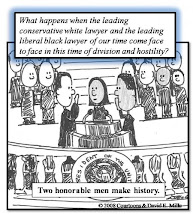
A great piece off the Marquette University Law Blog addresses the legal issues surrounding the case which generated so much controversy for me last week. I have not blogged personally about this yet, but it really was very simple for me when you think about it.
Historically, balls caught in the stands belong to the fans. And you don't make a deal with a 12 year old to give one up that may be historic. More on that later in the week. But now, the legal issues, well crafted on this blog by author J Gordon Hylton:
Earlier this week, the Philadelphia Phillies decided to return the baseball that Phillie Ryan Howard hit for his 200th career home run to the fan that caught the ball. This particular baseball is significant because Howard reached the 200 home run mark in fewer games than any player in baseball history. The “historic” home run was hit in Miami on July 16 in a game against the Florida Marlins, and the lucky fan was twelve-year-old Jennifer Valdivia, who was sitting in the right-field bleachers at Land Shark Park.
Valdivia and her fifteen-year-old brother attended the game without an adult companion. After catching the ball, the Miami resident was escorted by Florida Marlins employees to the Philadelphia clubhouse, where she was given cotton candy and talked into exchanging the home run ball for a different baseball autographed by Howard. Upon learning of these events, her family retained lawyer Norm Kent and formally requested that the ball be returned. The team refused to give the ball back for almost three months, but decided to do so after Kent filed suit on Monday, October 5.
Although the Phillies have so far refused to comment on their decision to return the ball, they most likely did so to avoid the bad publicity that would follow widespread reporting that the team had taken advantage of a twelve-year-old fan. What is more interesting is that the Phillies appear to have accepted that the ball did belong to Valdivia, rather than to the home team Florida Marlins or Major League Baseball. Had they believed the latter, they could simply have requested that the Marlins retrieve the ball for them, and they would not have had to barter with the young girl.
Historic home runs balls have become objects of great value in recent years, and the “ownership of balls batted into the stands” issue has been much discussed. However, the legal aspects of the matter have rarely been understood even though it is not really a complicated question. The right to such baseballs can be established through the application of basic property law principles.
The first task is to establish the owner of the ball before it is hit into the stands. Ordinarily, this is the home team, which is obligated to provide baseballs meeting major league specifications. The baseballs are given to the umpires prior to the game, but neither that action nor the use of the balls in pre-game practice or in the game itself reflects a transfer of ownership, as evidenced by the fact that any leftover baseballs are returned to the home team when the game is completed.
Logically, a fan retrieving a ball hit into the stands is legally entitled to keep the ball only if the home team’s ownership rights have been somehow transferred or relinquished. Ownership rights are transferred only by abandonment, gift, or sale. If there is no abandonment, gift, or sale, there is no change in ownership.
Although it is often stated that baseballs are abandoned once they leave the playing field, there is no legal basis for such an assertion. At football and basketball games at all levels and at amateur baseball games, fans are expected to return balls that travel into the area where spectators are seated. To lose control of an owned object is not tantamount to abandonment. If two boys are playing catch and an errant throw lands in a neighbor’s yard, they may not have the legal right to retrieve it on their own (because of trespassing laws), but that does not mean that they have abandoned their property rights to the ball.
Moreover, abandonment as a theory will not work in situations where representatives of the home team go into the stands immediately after the ball lands for the purpose of retrieving it. Obviously, the owner is not abandoning the ball if its agents are trying to get it back. Only if no effort is made to retrieve the ball, and it appears that the owner has relinquished any intention of reclaiming it, can the ball be said to be abandoned. Consequently, if the fan has a legal claim to a ball that the owner wishes to retrieve, the claim cannot be based upon a theory of abandonment.
A better argument than abandonment is the argument that the ball is a “gift” from the home team to the fan. Gifts require both donative intent (the intention to make a gift) and actual or constructive delivery. Otherwise, the change of possession represents either a bailment or theft, but in neither of those situations is there a change of legal ownership.
One could argue that when a fan enters the seating area of the stadium, the home team “prospectively” gives him or her any ball hit into the stands that he or she might retrieve. However, there are problems with the gift analysis. Although prospective interests can be the subject of gifts — I can give away a five percent interest in the profits (ha!) from my next casebook — the law of gifts normally requires that the donor control the object of the gift at the time of delivery and that the object of the gift can be defined with specificity. There is also a fine line between gifts of prospective benefits, which are enforceable, and promises to make a gift in the future, which are not.
Of course, if the home team decides not to make an effort to retrieve a particular ball hit into the stands and instead allows the fan that recovered it to keep it, one can argue that a gift has been made at that point. However, this rationale provides no legal protection for the fan in cases where the owner or its representatives are in the stands demanding the return of the ball.
The better analysis is that the ball belongs to a fan as a matter of contract. When one purchases a ticket to a professional baseball game, the buyer is led to believe that he is purchasing a number of entitlements — among which are the right to watch the ensuing game without interference and the right to sit in the seat identified on the ticket. Because of the longstanding practice, dating back at least to the 1920’s, of allowing fans to keep balls hit into the stands at professional baseball games, the “right” to keep such balls, I would argue, has become an implicit part of the contract between the team owner and the ticket buyer.
When you purchase a ticket to a baseball game, part of what you are purchasing is the right to keep any ball, hit fair or foul, that you retrieve when it passes into the stands. Every baseball fan knows this. To demand the return of a ball at this late date would constitute a breach of contract. Even if the fan were not entitled to the return of the ball itself, if it were improperly taken away, the fan would be entitled to the cash equivalent of the ball’s value.
This analysis would not prevent a team from announcing a new policy that all balls batted into the stands must be returned if requested, but it seems highly unlikely that any team owner would adopt such a policy, which would surely anger fans and give them reasons not to purchase tickets.
So the Phillies were actually right. The ball did belong to Jennifer Valdivia. It was hers under the terms of the contract between young Jennifer and the Marlins that was created when she purchased her ticket. What the Phillies did wrong was to try to defraud a young girl whose family knew how to find a lawyer who understood the sports memorabilia market.
The Miami Herald story reporting the return of the ball and a video of an interview with lawyer Norm Kent can be found here.
Valdivia and her fifteen-year-old brother attended the game without an adult companion. After catching the ball, the Miami resident was escorted by Florida Marlins employees to the Philadelphia clubhouse, where she was given cotton candy and talked into exchanging the home run ball for a different baseball autographed by Howard. Upon learning of these events, her family retained lawyer Norm Kent and formally requested that the ball be returned. The team refused to give the ball back for almost three months, but decided to do so after Kent filed suit on Monday, October 5.
Although the Phillies have so far refused to comment on their decision to return the ball, they most likely did so to avoid the bad publicity that would follow widespread reporting that the team had taken advantage of a twelve-year-old fan. What is more interesting is that the Phillies appear to have accepted that the ball did belong to Valdivia, rather than to the home team Florida Marlins or Major League Baseball. Had they believed the latter, they could simply have requested that the Marlins retrieve the ball for them, and they would not have had to barter with the young girl.
Historic home runs balls have become objects of great value in recent years, and the “ownership of balls batted into the stands” issue has been much discussed. However, the legal aspects of the matter have rarely been understood even though it is not really a complicated question. The right to such baseballs can be established through the application of basic property law principles.
The first task is to establish the owner of the ball before it is hit into the stands. Ordinarily, this is the home team, which is obligated to provide baseballs meeting major league specifications. The baseballs are given to the umpires prior to the game, but neither that action nor the use of the balls in pre-game practice or in the game itself reflects a transfer of ownership, as evidenced by the fact that any leftover baseballs are returned to the home team when the game is completed.
Logically, a fan retrieving a ball hit into the stands is legally entitled to keep the ball only if the home team’s ownership rights have been somehow transferred or relinquished. Ownership rights are transferred only by abandonment, gift, or sale. If there is no abandonment, gift, or sale, there is no change in ownership.
Although it is often stated that baseballs are abandoned once they leave the playing field, there is no legal basis for such an assertion. At football and basketball games at all levels and at amateur baseball games, fans are expected to return balls that travel into the area where spectators are seated. To lose control of an owned object is not tantamount to abandonment. If two boys are playing catch and an errant throw lands in a neighbor’s yard, they may not have the legal right to retrieve it on their own (because of trespassing laws), but that does not mean that they have abandoned their property rights to the ball.
Moreover, abandonment as a theory will not work in situations where representatives of the home team go into the stands immediately after the ball lands for the purpose of retrieving it. Obviously, the owner is not abandoning the ball if its agents are trying to get it back. Only if no effort is made to retrieve the ball, and it appears that the owner has relinquished any intention of reclaiming it, can the ball be said to be abandoned. Consequently, if the fan has a legal claim to a ball that the owner wishes to retrieve, the claim cannot be based upon a theory of abandonment.
A better argument than abandonment is the argument that the ball is a “gift” from the home team to the fan. Gifts require both donative intent (the intention to make a gift) and actual or constructive delivery. Otherwise, the change of possession represents either a bailment or theft, but in neither of those situations is there a change of legal ownership.
One could argue that when a fan enters the seating area of the stadium, the home team “prospectively” gives him or her any ball hit into the stands that he or she might retrieve. However, there are problems with the gift analysis. Although prospective interests can be the subject of gifts — I can give away a five percent interest in the profits (ha!) from my next casebook — the law of gifts normally requires that the donor control the object of the gift at the time of delivery and that the object of the gift can be defined with specificity. There is also a fine line between gifts of prospective benefits, which are enforceable, and promises to make a gift in the future, which are not.
Of course, if the home team decides not to make an effort to retrieve a particular ball hit into the stands and instead allows the fan that recovered it to keep it, one can argue that a gift has been made at that point. However, this rationale provides no legal protection for the fan in cases where the owner or its representatives are in the stands demanding the return of the ball.
The better analysis is that the ball belongs to a fan as a matter of contract. When one purchases a ticket to a professional baseball game, the buyer is led to believe that he is purchasing a number of entitlements — among which are the right to watch the ensuing game without interference and the right to sit in the seat identified on the ticket. Because of the longstanding practice, dating back at least to the 1920’s, of allowing fans to keep balls hit into the stands at professional baseball games, the “right” to keep such balls, I would argue, has become an implicit part of the contract between the team owner and the ticket buyer.
When you purchase a ticket to a baseball game, part of what you are purchasing is the right to keep any ball, hit fair or foul, that you retrieve when it passes into the stands. Every baseball fan knows this. To demand the return of a ball at this late date would constitute a breach of contract. Even if the fan were not entitled to the return of the ball itself, if it were improperly taken away, the fan would be entitled to the cash equivalent of the ball’s value.
This analysis would not prevent a team from announcing a new policy that all balls batted into the stands must be returned if requested, but it seems highly unlikely that any team owner would adopt such a policy, which would surely anger fans and give them reasons not to purchase tickets.
So the Phillies were actually right. The ball did belong to Jennifer Valdivia. It was hers under the terms of the contract between young Jennifer and the Marlins that was created when she purchased her ticket. What the Phillies did wrong was to try to defraud a young girl whose family knew how to find a lawyer who understood the sports memorabilia market.
The Miami Herald story reporting the return of the ball and a video of an interview with lawyer Norm Kent can be found here.
































No comments:
Post a Comment